Update - please see posts at the end: U band filter swap time (FBS 1.2 + FBS 1.3) … in short, we found swapping the filter at 40% illumination (+/-6 days around new moon) to work the best, and added pairs for u band visits.
One of the requests from the SAC was to evaluate the effect of confining u band visits to within a few days of new moon. The motivation behind this was multi-fold:
- constraining u band visits to a few days around new moon could improve the u band visit depth
- clustering u band around new moon (and y band around full moon) could let sequences of griz occur more frequently in the time in-between (from the DESC WFD white paper) and allow more time available for gri/zy DD sequences (from the DESC DD white paper)
Other relevant requirements include
- achieving the desired u band depth across the sky for photo-z calculations. The SRD defines this as u=26.1, equivalent to about 56 visits under ideal conditions.
- achieving the desired u band depth in Deep Drilling sequences. The AGN DD white paper (Brandt et al) request a depth of u=28.3 in each DD field, equivalent to approximately 2700 visits under ideal conditions.
Executive Summary:
In FBS 1.3, we will redo these runs with updates to the u band DD sequences, add a run with even tighter constraints in u band availability around new moon, and test adding higher priority to u band visits when available (particularly in areas where the coadded depth is lagging).
The FBS 1.2 runs show that we should use a smaller default value for when to swap filters (current default is 60% illumination; either 15% or 30% illumination would be a better default).
Details:
A very rough back-of-the-envelope estimate suggests that reaching DD depths of u=28.3 for 5 DD fields and 26.1 visits per point of the sky across the equivalent of the WFD, would require a total of about 144 nights (if a night is 10 hours long), so constraining u band visits more tightly to new moon should be possible (even if the u band filter is only available for a few nights around new moon).
With the FBS 1.2 set of runs, we have addressed the SAC request with a series of 3 simulations where the u band filter was swapped with z band at different levels of lunar illumination (equivalent to moon phase in this case, with ‘phase’ == ‘percent of lunar surface illuminated’, ranging between 0-100). These runs include filter swaps at 15%, 30% and 60% lunar illumination, corresponding to 3.5 (i.e. 3 or 4), 5, and 8 days from new moon.

None of these runs saturate the new moon time with u band visits (and you wouldn’t expect this, as twilight will still have non-u band visits), although there is a significantly higher fraction of visits in u band when the availability is limited to +/- 3-4 days around new moon.

The distribution of individual image depths doesn’t change significantly between these runs. The scheduler appears to be doing a good job at taking u band images under appropriate conditions. Thus the first concern - to constrain visits to near new moon to improve the visit depth - is already taken care of through the scheduler basis functions.
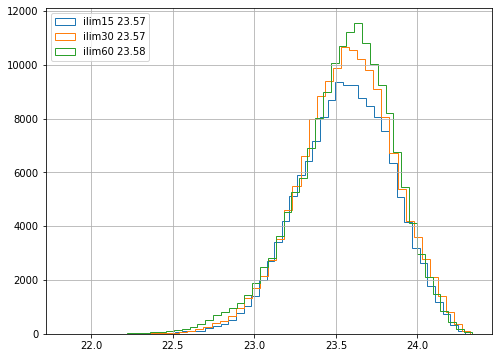
The second concern - clustering the u band visits to improve the cadence of grizy - is slightly more complicated to evaluate. The obvious problem is that in these runs, u band is being swapped with z band, so when u is in the telescope for longer there are necessarily longer gaps in z band. Pushing these gaps to 16 nights is likely problematic given the constraints stated in the DESC WFD white paper (maximum night gaps of 14 nights). There is a complementary difference in the spacing of the u band visits, however the u band does not have as strong constraints on the inter-night visit gaps. The distribution of visits in other filters is similar across these runs.


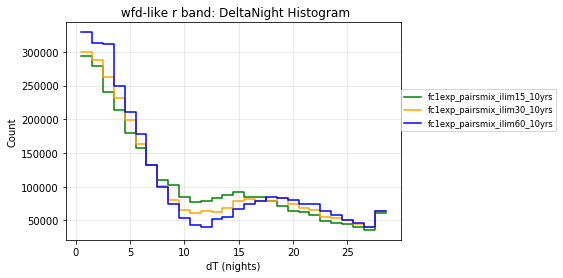

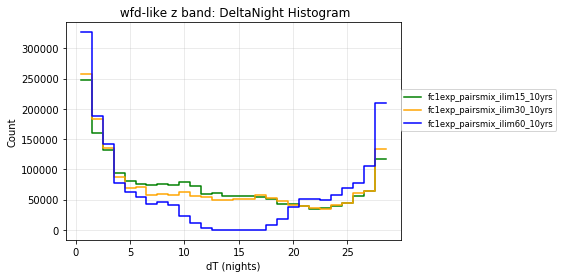
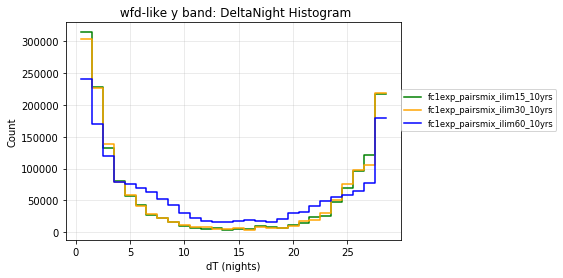
Looking at the u band visits and coadded depth across the sky**, we see that the runs with a shorter availability for the u filter resulted in a patchier distribution of visits and coadded depth. The number of visits were fewer in the fields overhead during summer (this is the area ‘left’ of the galactic plane and ‘south’ of the NES), although generally hit the 56 visit requirement - the coadded depth was patchier and often came a bit short of the desired 26.1 coadded magnitude. With a longer time available to take u band visits, the coadded depth improved - with almost 40% more area covered to the desired depth (13k vs. 9k sq deg). This suggests that we should try running the simulator to prefer u band visits a bit more strongly, particularly when the available time is more limited.
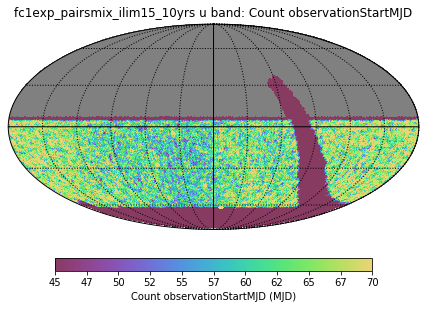
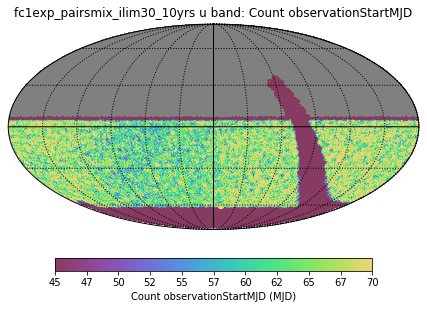
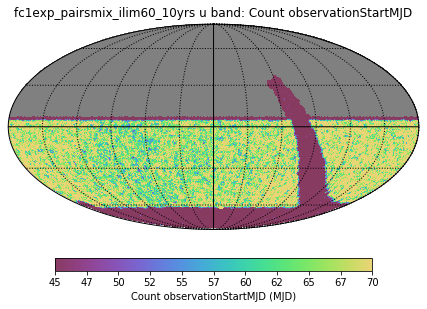
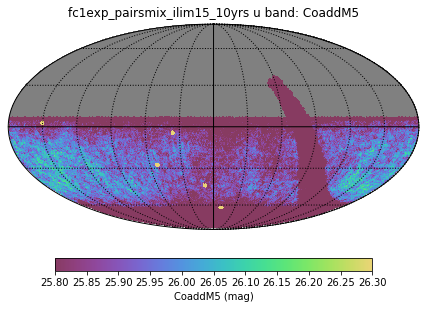
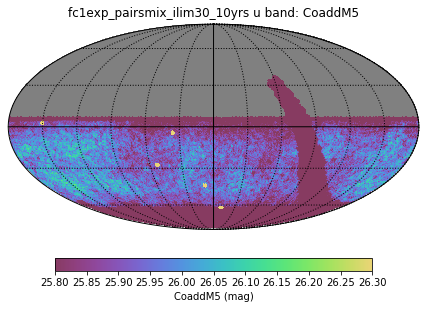
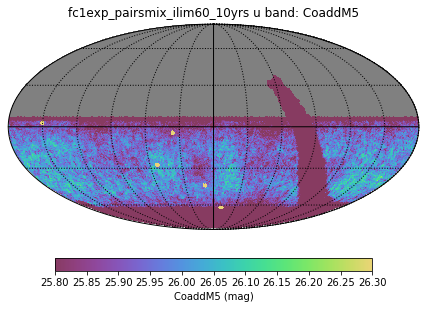
Looking at the u band visits for the DD fields exposed a small ‘feature’ in the DD sequences that was limiting the overall number of visits too strongly. This can (also) be seen in the way that some DD fields have many fewer u band visits than other fields. We will reconfigure the u band DD sequences so that the final coadded depth is more uniform between fields and deeper overall (likely by adjusting the number of visits in u band in each sequence, but also by relaxing the inter-night revisit gap requirement on the DD scripted survey).
(** note that in FBS 1.2 the reported u band depth per visit is close to 0.2 magnitudes shallower than the expected depth, due to a bug that reported the depth for a 2x15s visit instead of a 1x30s visit. The values shown here for individual image and coadded u band depth are thus about 0.2 magnitudes shallower than they should be).
